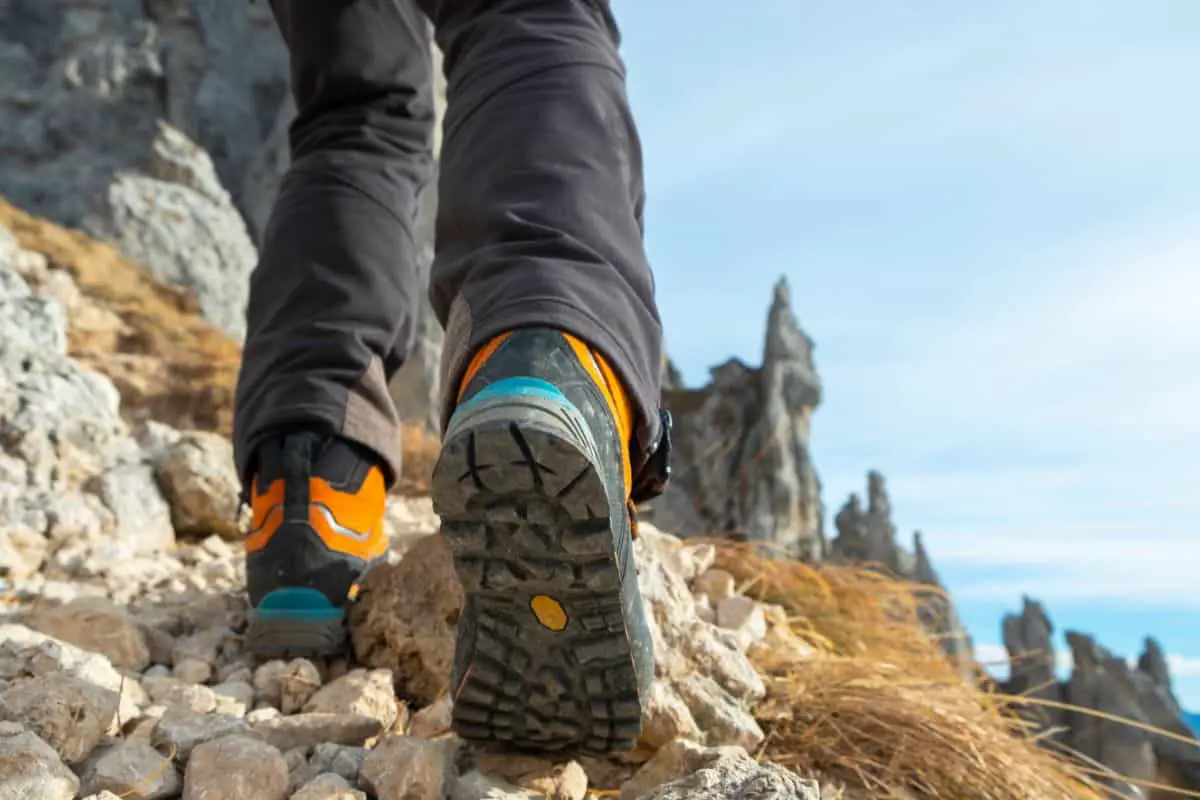How Should Hiking Boots Fit? Well, that’s a good question, isn’t it?
After all, your feet are going to be carrying you up and down all kinds of terrain for potentially hours on end, so you want to make sure they’re properly outfitted.
In this article, we’ll explore the ins and outs of finding the perfect fit for your hiking boots, so you can hit the trails with confidence and comfort. So, keep reading below!
Types Of Hiking Boots
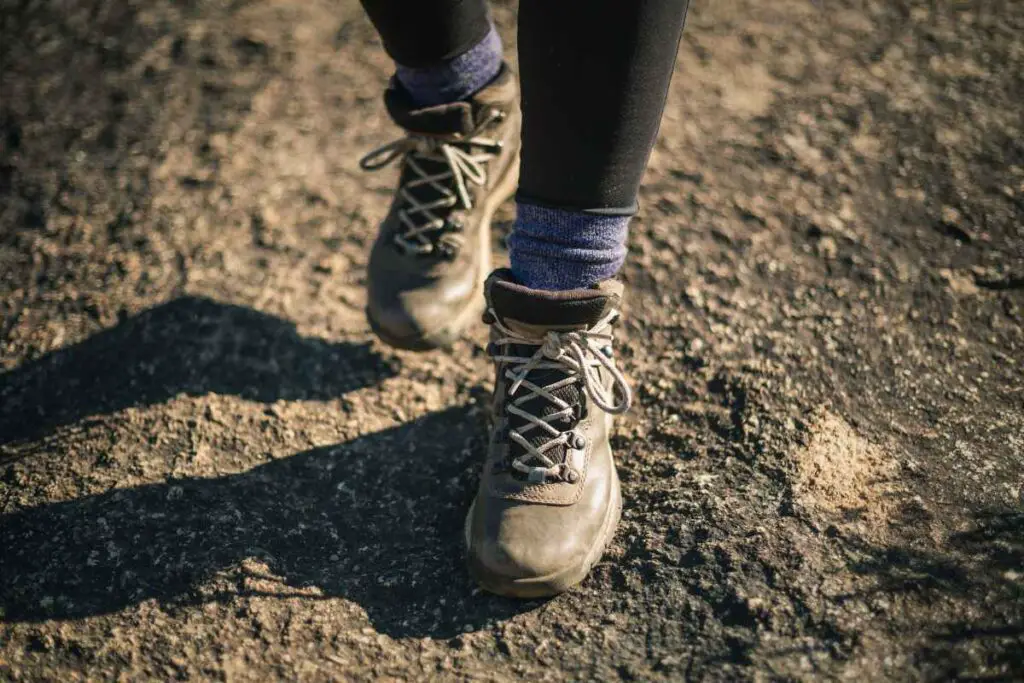
You know, there was a time when hiking boots were pretty much all the same. You had a thick sole, some laces, and maybe a little padding, and that was about it.
But these days, hiking boots come in a whole range of shapes, sizes, and styles, each designed for specific types of terrain and activities.
Basic Hiking Boots
First up, you’ve got your basic hiking boots.
These are your all-purpose, middle-of-the-road boots that are perfect for most day hikes and moderate trails.
They tend to be mid-height, with a sturdy sole and decent ankle support, but they’re not too heavy or cumbersome.
Read Next – How to Break In Hiking Boots the Right Way
Backpacking Boots
Then you’ve got your backpacking boots.
These boots are built to handle more intense hikes, with heavier loads and more challenging terrain. They’re typically taller than basic hiking boots, with a stiffer sole and more advanced ankle support.
Trail Runners
For those who like to move fast and light, there are also trail runners.
These are essentially lightweight sneakers with a little more grip and support than your average running shoe.
They’re great for shorter hikes and trail runs but might not be the best choice for serious backpacking or off-trail adventures.
Mountaineering Boots
And finally, for the true hardcore hikers out there, you’ve got mountaineering boots.
These beasts are designed for high-altitude mountaineering, with thick insulation, a stiff sole, and built-in crampon compatibility. Unless you’re planning on summiting Everest, though, you probably don’t need these.
Find out 🥾 Are Timberlands Good for Hiking?
Factors to Consider When Fitting Hiking Boots
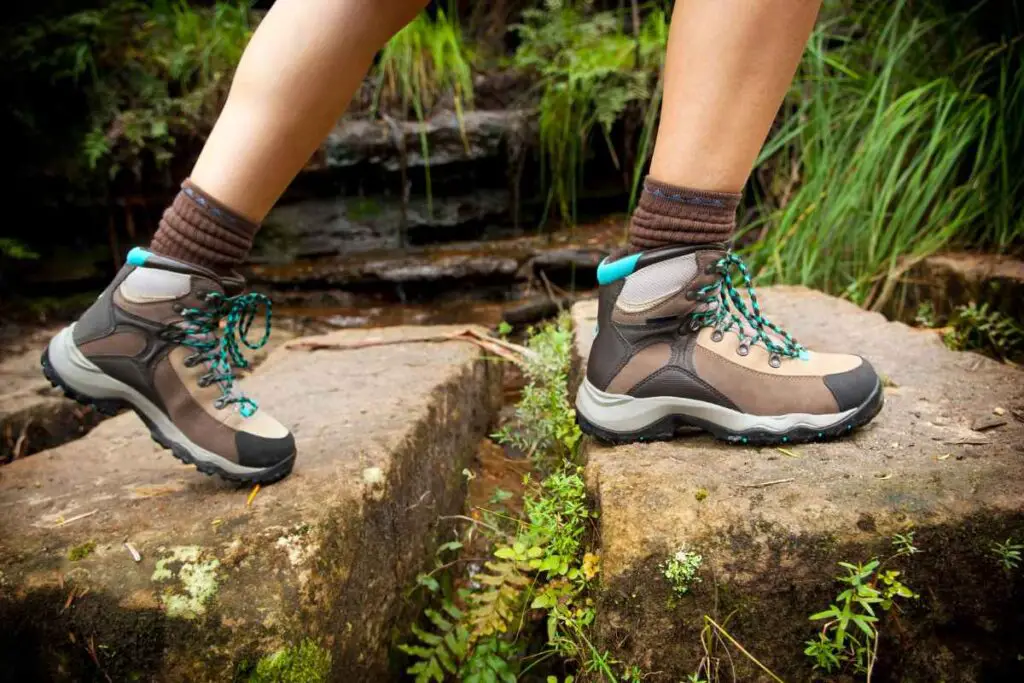
There are a few key factors to keep in mind when trying on boots, and each one can make a big difference in terms of comfort and performance.
Sizing
First and foremost, sizing is crucial.
You might be tempted to size up, especially if you plan on wearing thick socks or have wide feet but resist that urge. Your boots should fit snugly but not too tightly, with just enough room to wiggle your toes.
Too much space and your foot will slide around inside the boot, leading to blisters and discomfort. Too little space and you’ll be cramped and miserable.
Width
Width is also important, as everyone’s feet are different.
If your boots feel tight around the ball of your foot, you might need a wider size. Conversely, if the boots feel loose or floppy, they might be too wide.
Arch Support
Arch support is another key consideration.
Make sure your boots offer adequate support for your arches, as this can help prevent foot fatigue and injury.
Toe Box Room
Toe box room is also crucial, especially if you have wider feet or plan on tackling steep terrain. Your toes should have enough room to wiggle around without feeling squished.
Heel Fit
Heel fit is important for both comfort and stability. Your heel should fit snugly in the boot without slipping up and down.
Good to Know – Can Hiking Boots Be Resoled?
Ankle Support
And finally, ankle support is essential for preventing sprains and other injuries.
Your boots should offer enough support to keep your ankle stable without feeling too stiff or constricting.
How To Test the Fit Of Hiking Boots
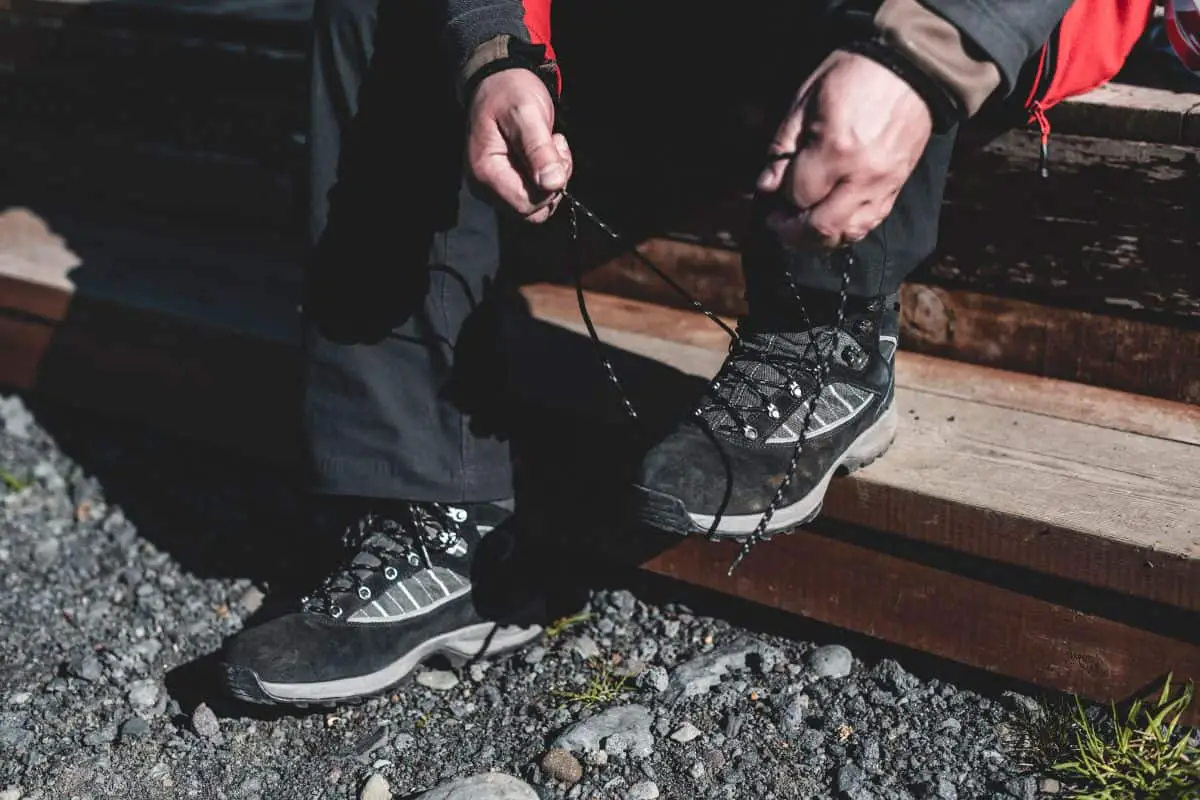
So, you’ve found a pair of boots that seem like they might be a good fit. But how do you know for sure?
Here are three simple tests you can perform to make sure your boots are as comfy as can be:
The Heel Lock Test
This one is pretty straightforward: lace up your boots as you normally would but leave the top two eyelets unlaced.
Then, pull up on the laces to create a snug fit around your heel. You should feel your heel being pulled back into the heel cup of the boot. This will help prevent slippage and blisters on the trail.
The Wiggle Test
Stand up and try wiggling your toes inside the boots. You should be able to wiggle them freely, but not too much. Your toes should not feel cramped or squished together.
Also Helpful – Do Hiking Boots Stretch Out
The Standing Test
Stand up straight in your boots and make sure your foot is in a natural position.
There should be no pressure points or pinching anywhere on your foot, and your ankle should be well-supported without feeling constricted.
You should also be able to walk around comfortably without feeling any rubbing or chafing.
How To Take Care Of Your Hiking Boots
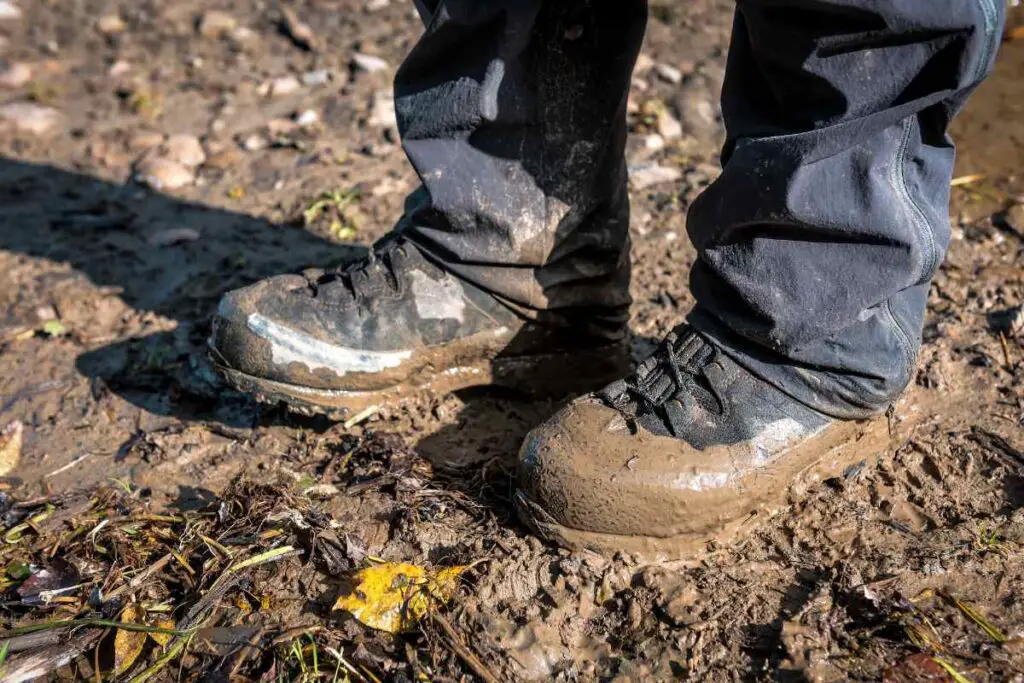
Taking care of your hiking boots is essential if you want them to last for years to come. Here are some tips for keeping your boots in top condition:
Proper Cleaning Techniques
First and foremost, proper cleaning is key.
After each hike, remove any dirt, mud, and debris from your boots using a stiff brush or damp cloth. If your boots are particularly dirty, you can use mild soap and warm water to clean them but make sure to rinse them thoroughly and allow them to air dry.
Storage Tips
When it comes to storage, make sure your boots are clean and dry before putting them away.
Stuffing them with newspaper can help them maintain their shape and absorb any excess moisture. Store your boots in a cool, dry place away from direct sunlight.
When To Replace Hiking Boots
Knowing when to replace your hiking boots is also important. Over time, the soles will wear down and lose their grip, which can be dangerous on steep or slippery terrain.
If the boots start to feel loose or the insoles become worn out, it’s probably time to start looking for a new pair.
The Bottom Line
Finding the right fit for hiking boots is crucial for a comfortable and safe hiking experience and with these tips and tricks you can choose the right one for you!
